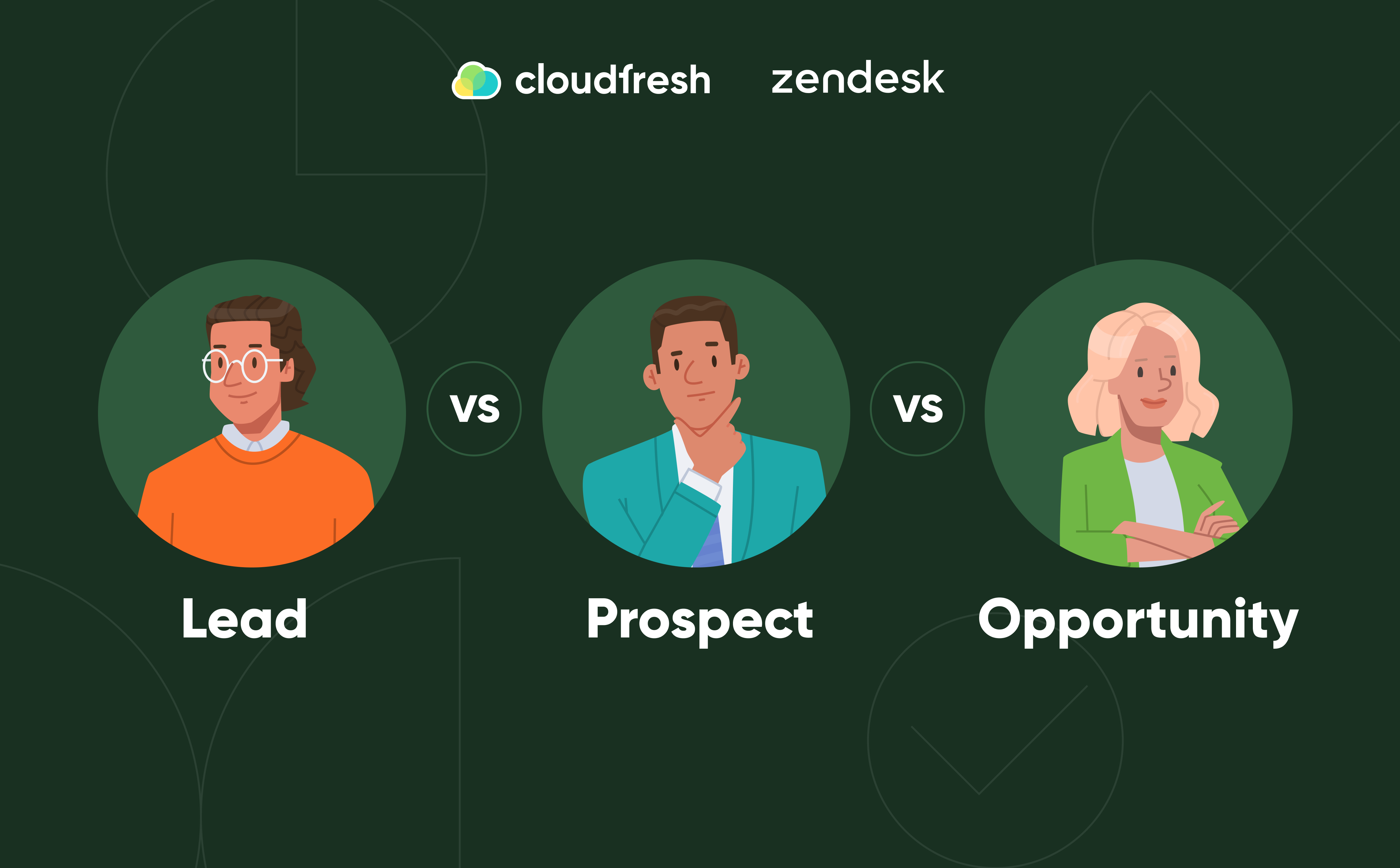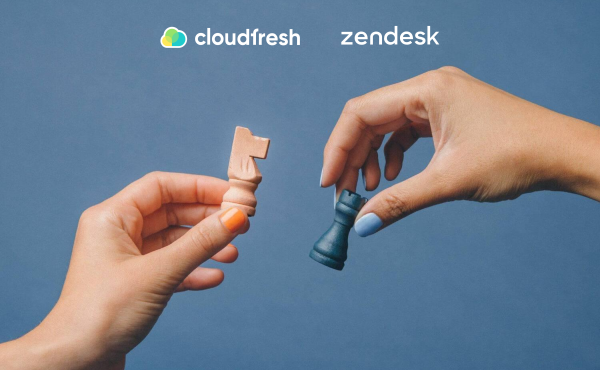6 Key Indicators to Track Customer Loyalty
Lead vs Prospect vs Opportunity

The words “potential customer,” “lead,” and “opportunity” are frequently encountered among sales professionals. They are actively used in their corresponding work. Communication between professionals would be easier with them, as well as making important decisions.
We will explain and describe these concepts in detail in this review. You will learn more about the difference between lead and prospect. In addition, we will introduce you to crucial information that relates to effectively finding new customers and managing key sales metrics.
What is a lead in sales?
Any potential buyer is a lead. It is a rather broad concept. Potential buyers of products and services are always placed at the top of the sales funnel.
There are many methods to increase the number of buyers of your services and to understand the difference between lead vs prospect. It is easy to find new leads on LinkedIn, where a sales manager can always find the right target audience. Other proven ways to find leads include:
- e-mail distribution;
- advertising campaigns in social networks;
- collecting customer feedback;
- making cold calls.
The basis of the potential audience is formed by people who have never dealt with your company before and do not know about its products. Therefore, it is not a fact that they will become a lead – someone willing to purchase. Unfortunately, most potential customers are not ready to buy something from you. They need to be convinced of the benefit they will have from the upcoming purchase.
What is a prospect? And it’s potential
Buyers who have a high probability of purchasing the offered product are called potential customers. They are selected from the many leads a sales professional has to deal with. It is necessary to determine how a lead corresponds to the product or service being sold to refer him to a potential customer.
Such work will require comparing each customer to your organization’s ideal customer sample. In other words, start by working out the characteristics that a prospective customer of your services or goods should have.
There are many examples of profiles of the best customers. It can be:
- a woman about 30 to 35 years old;
- with one child;
- with an average annual income.
If your business is B2B, the most suitable customer for you would be a manager or deputy in some company with a high-income level.
Modern marketing employs several best-selling strategies for ranking the buying audience. The most effective one is to communicate with the person simply. You can quickly identify his preferences and compare them with your product offer.
In addition, experts often use surveys with the help of forms that identify consumers’ primary desires and tendencies.
What is an opportunity in the sales funnel?
“Opportunities” are customers who have already shown interest in your product and will probably buy it. However, a customer who falls under the company’s exemplary profile should not be immediately categorized as an “opportunity” because the expected purchase may not occur. These customers may not be explicitly targeting your product. They may be satisfied with similar products of other companies and may not want to do business with you now.
But sales opportunity with a reasonably high probability can move into the category of your customers. It is the central importance of such buyers. A sales specialist can easily make “opportunities” to become real customers if desired.
So, lead, prospect and opportunity are entirely different terms, the understanding of which helps participants of any business effectively build their own sales strategy.
It is essential to be able to see the differences between these concepts. After all, each buyer type corresponds to a particular part of the sales funnel. Work is done with all these groups, which aims to move them to a more profitable status for the organization offering the products.
Sales funnel and its features
The sales funnel is a model valid for a specific company doing business related to production or sales. It answers the question of what is a lead and contains the number of potential buyers available at each stage and the conversion rate.
Identifying the specific stages of the sales marketing model is essential, as it indicates how successfully a particular strategy is built. You can find leads, potential customers, and opportunities in any sales funnel. A professional in this field should consider these points:
- Leads are located at the top of the model. They include customers who could purchase your product.
- After selecting potential customers among the leads, they are moved to the next position in the funnel.
- Potential customers are moved to the “opportunities” category if they show interest in the product.
- When a particular product or service has already been purchased, the transaction is closed, and at this stage, “opportunities” move into the category of real customers.
The funnel offers many alternatives, as the most potential customers are placed in its upper segment. The seller goes down the funnel from top to bottom. Moreover, when making actual purchases, the number of customers will become much smaller. The inevitable reduction comes from those consumers who refuse to buy.
What is the purpose of dividing sales funnel customers into three types?
Classifying a company’s potential customers into ranks allows you to optimize how you work with them to achieve conversions successfully. Such efforts result in sales professionals making many more successful deals while taking a more intelligent approach to their time management and optimizing all kinds of costs.
You don’t need to give the lead a long lecture about the benefits of your products. First, you need to find out his portrait and how he will behave in the future. Your efforts may be wasted in the end.
Another thing to consider is what is a prospect? Sales professionals should spend maximum time working with their possible objections to obtain their purchase agreement.
Keeping track of customers of all kinds and working with them within the sales funnel is necessary to close as many sales deals as possible. However, such procedures need to be properly organized. Practical, concrete conversion actions are possible only if sales professionals have a good idea of the state of individual consumers and the chances of converting them into actual customers – buyers of goods or services.
Successful transactions await only those who can correctly read their marketing sales model and correctly categorize representatives of the target audience into one of three types, depending on their readiness to buy. Such a sales representative will always act according to the objective situation while achieving the best productivity in his business.
The process of creating a potential customer from a lead
Converting random people into potential customers of services or products is one of the most important tasks of marketing. Successfully bringing a customer in the right direction will require characterizing him correctly. Further work with the lead will be appropriate only when you determine how it corresponds to your products. There are several proven methods to move the buyer through the sales funnel. We will look at them below.
Creating a buyer image
Potential customers are leads who have shown a keen interest in your product. A sales professional needs to compare them to a pre-developed ICP (Ideal Customer Profile) to understand their prospects for further work. It includes the prospective customer’s personality traits, preferences, and other essential factors.
To convert leads into prospects, it is necessary to:
- pay attention to the company’s actual customers, identifying their common features;
- interview these customers to obtain as much detailed information about them as possible;
- make an ICP model, considering the data obtained about the type of company where the client works, its size, profitability, etc.
ICP development is an essential stage for those building their sales funnel and wanting to know what is an opportunity. Therefore, you must implement it as soon as possible.
Establishing contact with possible buyers
Identifying a lead requires additional information. There are so many effective ways to obtain it. As mentioned above, the marketing specialist can learn about the consumer’s preferences, purchasing power, and other essential properties in a normal conversation. Then, the acquired information should be compared with an ideal ICP model made in advance. Based on this, you can conclude whether a particular customer suits you and whether you should expect active actions from him in the future.
In addition to live communication, you can get information about what a customer is like – lead vs prospect – by surveying and interviewing them online. You can offer users of your online resource some useful services in return for a request to fill out a simple form consisting of a series of questions.
Along with manual data processing methods, automatic systems can be used to collect such information. These include the Nutshell software module, which will inform you about who clicks on the links you send by e-mail. Hotjar will provide you with details of visits to your online catalog. LinkedIn will suggest organizations where you should look for buyers of your products.
It is necessary to qualitatively analyze all received data on leads to compile the most complete information about potential customers. It is the only way for a sales employee to find potential customers for a company that sells certain goods or services.
Generating prospects
To “grow” a prospect, sales professionals must work hard to develop an appropriate attitude towards him. This method is one of the most effective if you have to move a lead into the category of potential consumers of your services or products. Many leads will pass into the type of potential customers. The main reason for their decision is that they will receive comprehensive information about the product, will be interested, and will ask you to provide more details.
The main question novice sales managers ask is what information should be provided to leads. The right ones for this stage of the TOFU sales funnel are:
- interesting blogs;
- e-books;
- podcasts;
- social media posts;
- videos on popular sites;
- rich content from e-newsletters;
- graphics and advertisements.
As a rule, such material is relatively easy to compile. The main thing is that it should be highly informative and useful to the end user. Therefore, any prospective buyer may be interested in the content you provide. That’s why working with customers who reveal a genuine interest in the product is so important!
Understanding the nuances of the client onboarding process can transform your business’s relationship with its clients. This article offers a comprehensive guide that’s too valuable to miss.
Lead vs opportunity – the path to profitable sales
A potential client who actively engages with your company is a hot prospect, a step closer to becoming a loyal customer. These interactions represent valuable opportunities for your sales team to convert interest into revenue. Engaging with potential customers who demonstrate genuine interest in your product is crucial for sales success.
One of the most effective methods to gain valuable insights about your buyers is to make cold calls and engage in personalized conversations. During these confidential conversations, potential customers may reveal their pressing challenges. This presents an opportunity for you to introduce your company’s products and services as solutions to their specific needs.
While calling every potential customer for general inquiries is impractical, each cold call can convert a prospect into a paying customer. Therefore, sales specialists should capitalize on these opportunities to nurture leads and drive sales.
As a leading Zendesk Premier and Implementation Partner, we specialize in empowering businesses to elevate their customer service management through tailored Zendesk solutions. Our comprehensive Zendesk Professional services enable you to:
- Streamline customer interactions and resolve issues efficiently.
- Leverage powerful analytics to gain insights into customer behavior and preferences.
- Empower your customer service team with the tools and resources they need to excel.
Contact our team today to discuss your specific needs, explore our Zendesk Professional services in more detail, and discover the optimal Zendesk solutions for your business.













